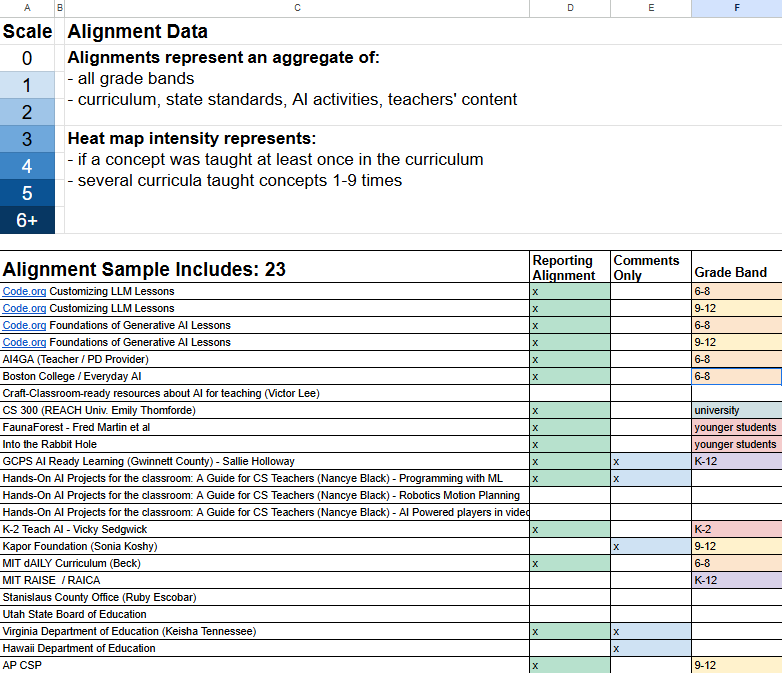AI Learning Priorities
for All K-12 Students
AI Learning Priorities
for All K-12 Students
Vision
All students must learn about artificial intelligence (AI) as part of a foundational computer science (CS) education in order to be prepared for a world powered by computing.
Over the last few years, we have witnessed an unprecedented expansion in artificial intelligence capabilities, with ChatGPT experiencing the most rapid adoption of any consumer app in history. Generative AI tools (that is, AI capable of generating text, audio, images, and/or video) have significant economic, legal, societal, and national security implications. Increasing public awareness of these impacts – ranging from environmental consequences to debates about intellectual property to concerns over potential job losses due to automation – have made AI a staple topic of the news cycle in the last few years.
It is thus no surprise that eight out of ten CS teachers believe that learning about and using AI should be part of a foundational CS learning experience and that CS standards should include AI. In fact, when asked to identify the topics they teach, over two-thirds of CS teachers stated they covered AI specifically, despite the lack of explicit definition in most CS standards.
As part of its standards revision effort, CSTA, in partnership with AI4K12, spearheaded the Identifying AI Priorities for All K-12 Students project. The project gathered experts – including teachers, researchers, administrators, and curriculum developers – to articulate AI learning priorities within CS. This project was designed to support the revision of CSTA standards so that the new standards will be positioned to incorporate appropriate AI learning outcomes.
What AI Content and Skills are Important for ALL Students?
A primary outcome of the Identifying AI Priorities for All Students project is a list of foundational AI learning outcomes organized by grade band across five categories. Explore the foundational AI content using the summarizing figure below.
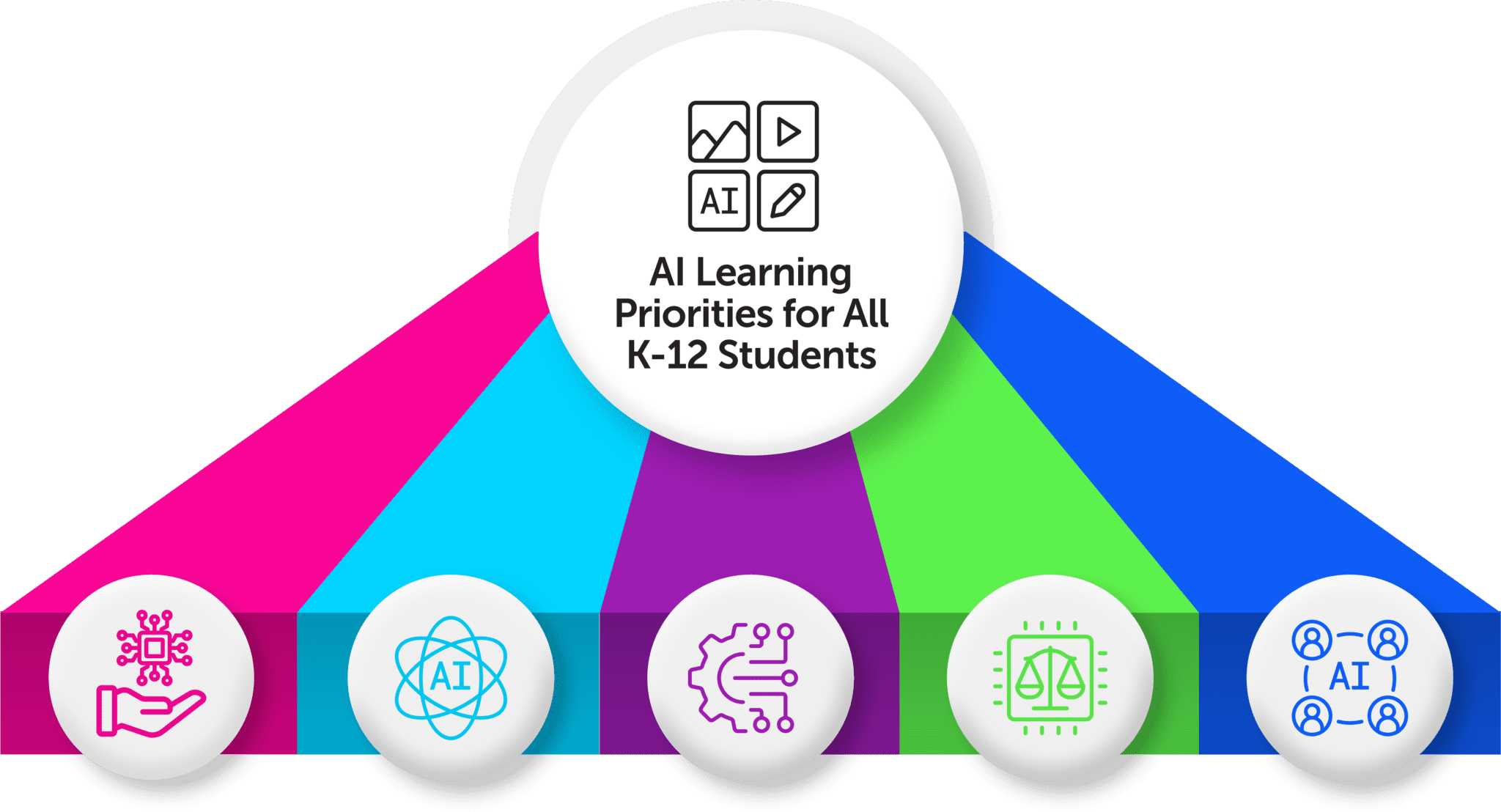
Humans and AI Prioritized Learning Outcomes
|
Subtopic |
Grades K-2 |
Grades 3-5 |
Grades 6-8 |
Grades 9-12 |
|---|---|---|---|---|
|
The Nature of |
Compare and |
Compare and |
Identify the |
Debate what |
|
The Human Role |
Understand that AI |
Describe the role |
Describe the roles |
Evaluate and |
|
The Choice to |
N/A |
Evaluate when AI is |
Debate when |
Analyze the risks, |
Representation and Reasoning Prioritized Learning Outcomes
|
Subtopic |
Grades K-2 |
Grades 3-5 |
Grades 6-8 |
Grades 9-12 |
|---|---|---|---|---|
|
Understanding |
N/A |
Understand how |
Understand that |
Describe how |
|
Creating a |
Create a |
Create an abstract |
Create and evaluate |
Choose and use |
|
Reasoning |
Explain how binary |
Train a model that |
Identify the kinds |
Describe different |
Machine Learning Prioritized Learning Outcomes
|
Subtopic |
Grades K-2 |
Grades 3-5 |
Grades 6-8 |
Grades 9-12 |
|---|---|---|---|---|
|
Sensing |
Compare and |
Describe various |
Use sensors to |
Using sensor |
|
Data |
Explore how AI |
Explore the |
Describe the ways |
Evaluate the data |
|
How Computers |
Understand |
Investigate how |
Create and |
Select and use an |
|
Building and |
Use data to construct |
Using a dataset, |
Using a dataset and |
Using a dataset |
Ethical AI System Design and Programming Prioritized Learning Outcomes
|
Subtopic |
Grades K-2 |
Grades 3-5 |
Grades 6-8 |
Grades 9-12 |
|---|---|---|---|---|
|
Ethical Design |
N/A |
Investigate an |
Explore strategies |
Evaluate an AI model |
|
Ethical Evaluation |
Explore how |
Investigate |
Describe the |
Evaluate the |
|
Ethical Creation |
N/A |
Describe an AI |
Create a program |
Train, iteratively |
Societal Impacts of AI Prioritized Learning Outcomes
|
Subtopic |
Grades K-2 |
Grades 3-5 |
Grades 6-8 |
Grades 9-12 |
|---|---|---|---|---|
|
Individual Impacts |
Identify where |
Explore how |
Explore the tradeoffs |
Evaluate how AI use |
|
Societal Impacts |
Explore how some |
Explore ways in |
Identify the intended |
Evaluate the intended |
|
Environmental |
N/A |
Explore the |
Investigate the |
Design ways to |
Given the wide scope of computer science and already full curriculum, the project team emphasized the need to define levels of priority. As a result, rows within each table are highlighted in light green to indicate the most important of the foundational AI content. This determination was made based on artifacts of the convening and detailed feedback during the review process for this report. Prioritized content (i.e., highlighted rows) across all five categories is compiled into a singular table in Appendix F.
Promising Practices for Teaching AI
To meet the project’s goal of sharing promising practices across the AI and CS education communities, the convening featured brief presentations from participants that highlighted their work in this field.
Based on these presentations, we offer the following recommendations for AI curriculum:
While studying some aspects of AI requires advanced mathematics, many aspects do not. Even the youngest elementary school students can learn – ideally from engaging, hands-on experiences – that, for example, a decision tree can be used to show the process by which decisions are made. This type of learning creates a foundation that permits older students to study more advanced topics.
We note that more tools need to be developed to support AI education. However, extant tools can help make complex topics accessible to students, and they can also provide interactive learning experiences that do not require programming to implement. For example, middle school students can train classifiers using Google’s Teachable Machine and MIT RAISE Playground, and high school students can experiment with neural networks using Neuron Sandbox or TensorFlow Playground.
It is important to avoid the tendency to think of AI education as primarily preparing those who will work as AI specialists. Only a vanishingly small portion of all students will pursue that career path. On the other hand, all students – regardless of career choice – will need to be critical consumers of AI as they determine whether, for example, they believe that the benefits of using an AI tool outweigh its environmental cost or whether the potential for historical biases in the tool’s training data imply that the tool’s output should not be trusted. Similarly, as citizens, they will benefit from developing well-informed and thoughtful positions about topics such as the advisability of regulating AI.
*Additional examples can be found in the report.
Resources
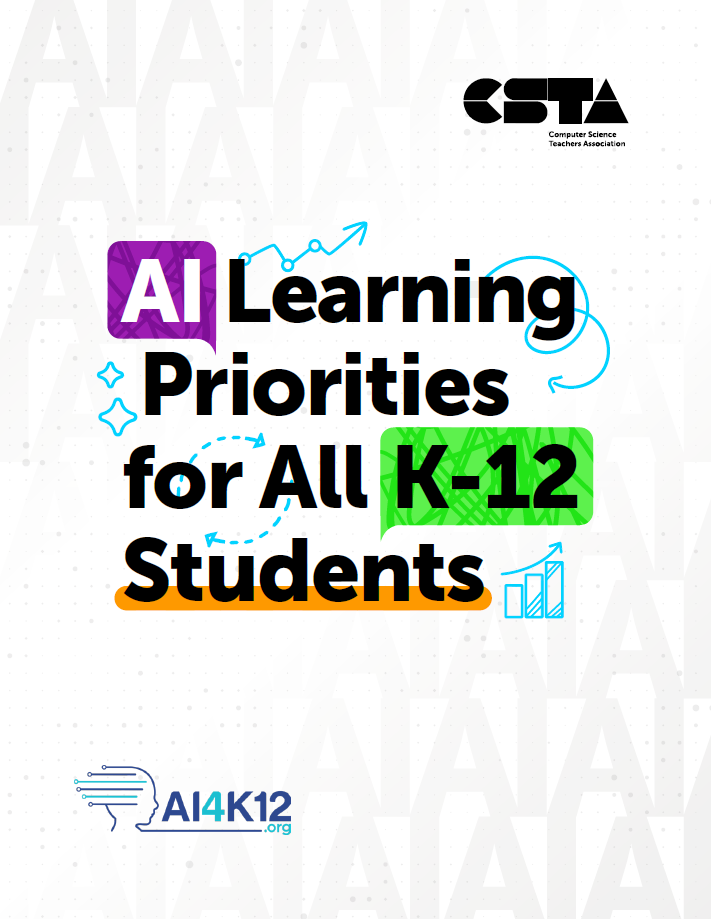
This resource is a glossary of key AI-related terms and definitions based on the AI4K12 glossary.
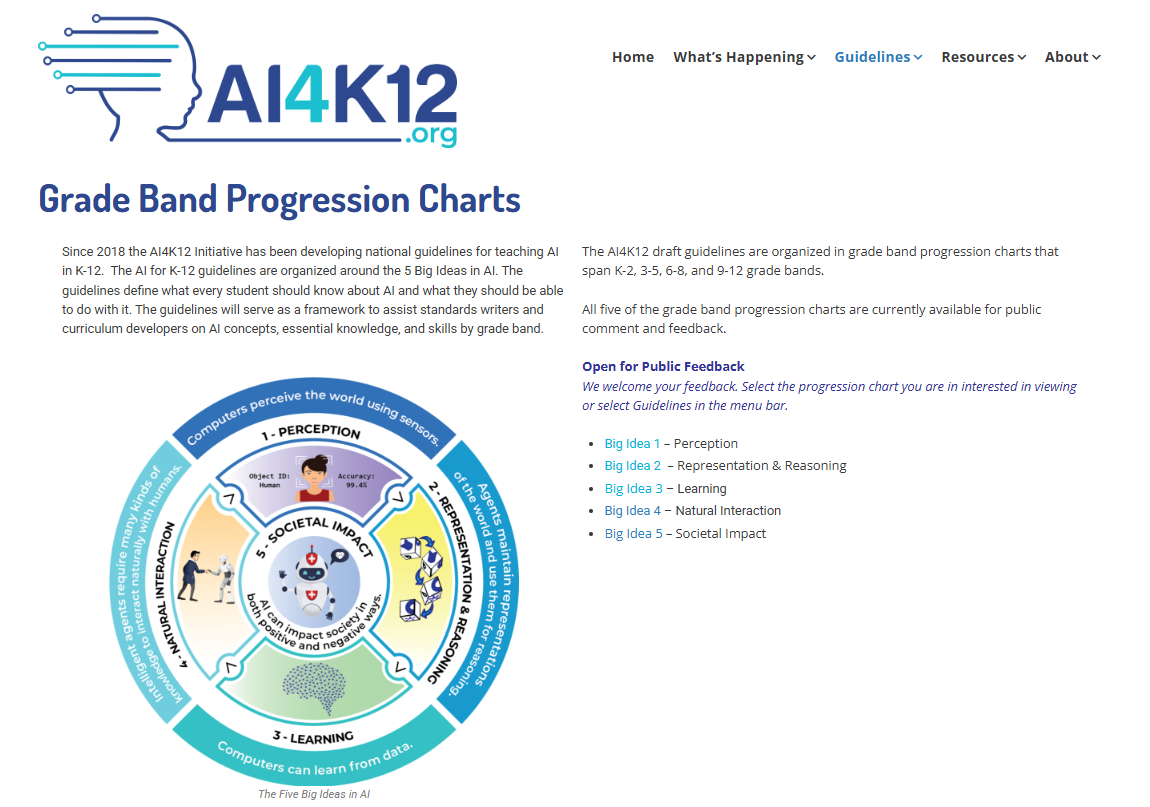
The guidelines serve as a framework to assist standards writers and curricula developers on AI concepts, essential knowledge, and skills by grade band.
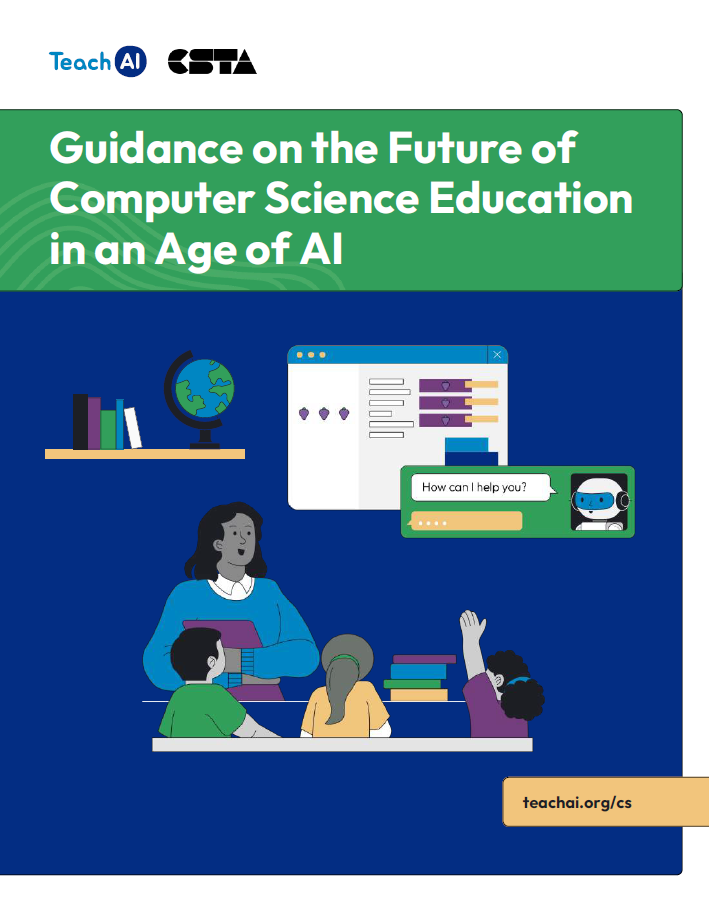
The Future of CS in an Age of AI briefs address critical questions related to the role of AI in primary and secondary computer science (CS) education.
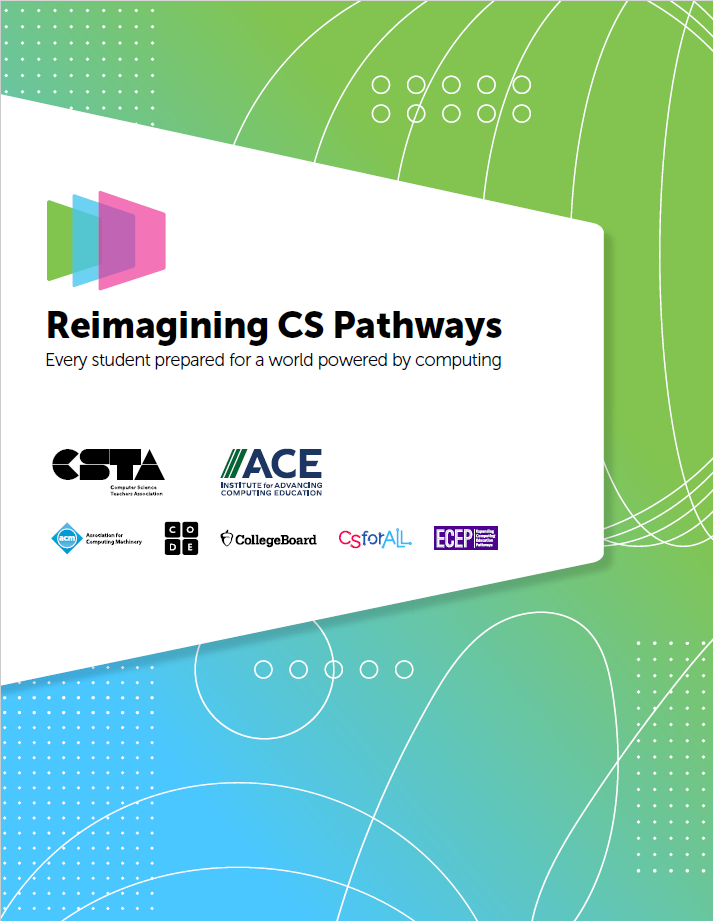
Reimagining CS Pathways – AI specialty area
An outcome of the Reimagining CS Pathways project included defining AI content beyond a foundational CS learning experience to inform the development of a high school AI pathway.

Prioritized Foundational K-12 AI Learning Outcomes
This resource includes the most essential AI content for all K-12 students.
SUGGESTED CITATION
CSTA & AI4K12 (2025). AI Learning Priorities for All K-12 Students. New York, NY: Computer Science Teachers Association.
Retrieved from https://csteachers.org/ai-priorities.
This work is licensed under CC BY-NC-SA 4.0.
REFERENCES
Berthelot, A., Caron, E., Jay, M., & Lefèvre, L. (2024). Estimating the environmental impact of Generative-AI services using an LCA-based methodology. Procedia CIRP, 122, 707–712.
Lucchi, N. (2024). ChatGPT: A Case Study on Copyright Challenges for Generative Artificial Intelligence Systems. European Journal of Risk Regulation, 15(3), 602–624.
Gmyrek, P., Berg, J., & Bescond, D. (2023). Generative AI and jobs: A global analysis of potential effects on job quantity and quality. International Labour Organization.
CSTA, IACE, ACM, Code.org, College Board, CSforALL, & ECEP Alliance. (2024). Reimagining CS Pathways: Every student prepared for a world powered by computing.
TeachAI & CSTA. (2024). Guidance on the Future of Computer Science Education in an Age of AI. CSTA & Kapor Foundation. (2025) [Forthcoming]. Landscape Study of PreK-12 CS Teachers in the United States.

